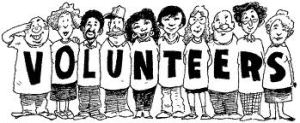 I had the privilege of interviewing a young fundraising professional yesterday for an online article that I am writing. In that interview, we talked for almost an hour about direct mail and her passion for learning as much as she can about that industry’s best practices and how to apply it to her non-profit fundraising work.
I had the privilege of interviewing a young fundraising professional yesterday for an online article that I am writing. In that interview, we talked for almost an hour about direct mail and her passion for learning as much as she can about that industry’s best practices and how to apply it to her non-profit fundraising work.
We spent a good long time talking about her passion for “mail merge“.
I know, I know. To those of you who don’t do much work on the snail-mail side of the fundraising profession, this probably sounds a little funny. After all, isn’t mail merge simply a word processor function?
The reality of direct mail and targeted mail is that the more personalized you can make your mail piece the more effective it will be in raising money for your organization. In other words, a letter that begins with “To Whom It May Concern” or “Dear Friend” will raise significantly less than “Dear Erik” or “Dear Mr. Anderson“.
Of course, for many of us, mail merge begins and ends with the salutation at the top of the letter. But this was NOT the case for my energetic young interviewee yesterday. The following are just a few of the ways she was using mail merge in her fundraising letters:
- Customized salutation (as described above)
- Customized signatory (board member with a relationship to the donor)
- Last year’s gift amount
- This year’s ask amount
- Customized gift level check boxes on the response card
- Customized message on the outside envelope
To say this fundraising professional is in love with the mail merge as a tool would be an understatement. As would be my admiration for someone who exhibits that much passion for her work with donors and the art of philanthropy.
You might be wondering about the last two bullet points pertaining to the response card and the exterior envelope. Let me try to clarify in the space below.
With regard to the check boxes on the response card, there is some good evidence that indicates that the numbers you use psychologically factor into the donor’s decision.
For example, if a donor gave $275 last year and you’ve asked them to consider a $350 gift this year, some experts say you should not provide check box options with big gaps (e.g. $250, $500, $1000) because the donor will likely round down if last year’s gift is closer to that number instead of rounding up. To combat this psychology, using mail merge to customize the options (e.g. $275, $350, $500) can help increase the effectiveness of your upgrade strategy.
With regard to the customized message on the outside envelope, there is good evidence that people open mail from people they know. For example, an envelope that simply indicates there is something from your non-profit organization is less likely to be opened because donors can guess it is likely a solicitation and treat it like they do other direct mail. However, mail merging a message such as “A message from [insert BD vol name] is inside” will increase the odds of the donor opening the envelope because we all give consideration to our friends.
There is no doubt that direct mail and targeted mail are complicated and involve proven practices (aka the science of direct mail), which is why talking to young, enthusiastic fundraising professionals about this topic always does my soul some good.
So, my tip for today as it relates to direct mail is MAIL MERGE is your friend!
The following are a few older DonorDreams blog posts on the topic along with a few other resources:
- CMO Council: Data/Metrics on Direct Marketing
- DonorDreams blog: Tips to Improve Your Direct Mail Strategy
- DonorDreams blog: Because you know it’s all about that list
- DonorDreams blog: Get over your fear and ask for a specific contribution amount
- DonorDreams blog: Things to consider before sending your next direct mail solicitation
- DonorDreams blog: What’s in your mailbox? Part 1
- DonorDreams blog: What’s in your mailbox: Part 2
- DonorDreams blog: What’s in your mailbox: Part 3
Here’s to your health!
Erik Anderson
Founder & President, The Healthy Non-Profit LLC
www.thehealthynonprofit.com
erik@thehealthynonprofit.com
http://twitter.com/#!/eanderson847
http://www.facebook.com/eanderson847
http://www.linkedin.com/in/erikanderson847

 OK . . . I have a confession to make. When I’m on the road and run down, sometimes I flop into bed and watch an episode or two of South Park on Comedy Central. While the show’s satire is often over the top, their social commentary on all sorts of current events is razor sharp. A few nights ago I found myself caught up in this “travel habit” and engaged in watching season 19 episode five, which was all about Internet Shaming and included a subplot about Charity Shaming.
OK . . . I have a confession to make. When I’m on the road and run down, sometimes I flop into bed and watch an episode or two of South Park on Comedy Central. While the show’s satire is often over the top, their social commentary on all sorts of current events is razor sharp. A few nights ago I found myself caught up in this “travel habit” and engaged in watching season 19 episode five, which was all about Internet Shaming and included a subplot about Charity Shaming. A few days ago I found myself talking with an old friend who is an executive director for a youth development non-profit organization in Indiana. We were chatting about her organization’s year-end stewardship strategies, which include something called a “Cookie Drop.”
A few days ago I found myself talking with an old friend who is an executive director for a youth development non-profit organization in Indiana. We were chatting about her organization’s year-end stewardship strategies, which include something called a “Cookie Drop.”
 If you’re seeking to expand your volunteer base, you may not need to look very far.
If you’re seeking to expand your volunteer base, you may not need to look very far.![IMG_20151124_165228090[1]](https://donordreams.files.wordpress.com/2015/11/img_20151124_1652280901.jpg?w=169) First, let me start by wishing you and your non-profit organizations a very Happy Thanksgiving! My plane landed at a crazy, busy O’Hare airport yesterday and now I have the luxury of three straight days at home with family and friends (and let’s not forget the turkey and trimmings . . . Mmmmmm!) Since it is Thanksgiving Day, I was going to simply re-post an old blog such as:
First, let me start by wishing you and your non-profit organizations a very Happy Thanksgiving! My plane landed at a crazy, busy O’Hare airport yesterday and now I have the luxury of three straight days at home with family and friends (and let’s not forget the turkey and trimmings . . . Mmmmmm!) Since it is Thanksgiving Day, I was going to simply re-post an old blog such as:![IMG_20151124_165234801[1]](https://donordreams.files.wordpress.com/2015/11/img_20151124_1652348011.jpg?w=300) Bob’s gift to me this Thanksgiving (and he didn’t even know he was giving me this gift) is a reminder about how special and important volunteers are to all of our organizations in spite of our human imperfections.
Bob’s gift to me this Thanksgiving (and he didn’t even know he was giving me this gift) is a reminder about how special and important volunteers are to all of our organizations in spite of our human imperfections. As most of you know, I’ve been traveling A LOT lately and I haven’t had the opportunity to watch a lot of television. However, it seems like every time I have the TV turned on, I’m seeing a television commercial from General Electric (GE) that talks about “ideas”.
As most of you know, I’ve been traveling A LOT lately and I haven’t had the opportunity to watch a lot of television. However, it seems like every time I have the TV turned on, I’m seeing a television commercial from General Electric (GE) that talks about “ideas”. However, there is much, much more to leading change than the simple six step model that some organizational development consulting/training companies teach, and I suspect it has something to do with your organization’s culture. This is where I think all of us can learn from The Walt Disney Company, home of “Imagineering”. (Note: this term is trademarked by Disney)
However, there is much, much more to leading change than the simple six step model that some organizational development consulting/training companies teach, and I suspect it has something to do with your organization’s culture. This is where I think all of us can learn from The Walt Disney Company, home of “Imagineering”. (Note: this term is trademarked by Disney) In terms of traditional types of giving, past donations are strong indicators of future giving. That trend logically carries over to planned giving.
In terms of traditional types of giving, past donations are strong indicators of future giving. That trend logically carries over to planned giving.  This factor is in reference to those whom your organization positively affected. The range is fairly broad here. A planned gift might be left to a university by a dedicated alumnus.
This factor is in reference to those whom your organization positively affected. The range is fairly broad here. A planned gift might be left to a university by a dedicated alumnus.  Let me start by stating in no uncertain terms that planned giving prospects do not have to be wealthy.
Let me start by stating in no uncertain terms that planned giving prospects do not have to be wealthy.  Factor four encompasses the large gift loophole for planned giving donors. Although they are often comparable in size, unlike major gifts, planned gifts do not inherently require wealth.
Factor four encompasses the large gift loophole for planned giving donors. Although they are often comparable in size, unlike major gifts, planned gifts do not inherently require wealth.  You’ve probably noticed a theme among three of the traits listed above:
You’ve probably noticed a theme among three of the traits listed above: Sarah
Sarah So you have your RSVP list. You know who is coming. What do you do with that information?
So you have your RSVP list. You know who is coming. What do you do with that information?  Much like you can create a pre-event V.I.P. list, you can do the same after the event.
Much like you can create a pre-event V.I.P. list, you can do the same after the event. Albert Einstein defined insanity as doing the same thing over and over again and expecting different results.
Albert Einstein defined insanity as doing the same thing over and over again and expecting different results.